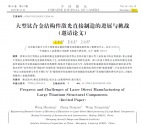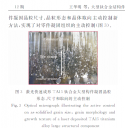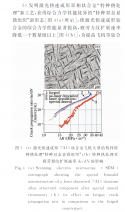Spotted this video in the Science and Technology thread. It’s an interview with the guy responsible for developing the printing technique for the FC-31’s bulkheads and there’s a segment in it that actually helps answer why China is able to use large 3D printed structures as high load bearing parts. At around the 18:30 mark he and the interviewer inspect a magnified image of a 3D printed titanium part’s grain structure and he talks about how he has full control over the grain size, shape, and orientation in the printing process, and that in turn helps them control, even alter, the basic properties and characteristics of the material they are working with. In that particular image it seems they’ve created a titanium part with cross hatched grain microstructures that essentially reinforces the strength of the part. This is much more sophisticate, complex, and deliberate control of grain structures than I’ve seen from any open source materials investigating this aspect of 3D printing to improve material performance.



